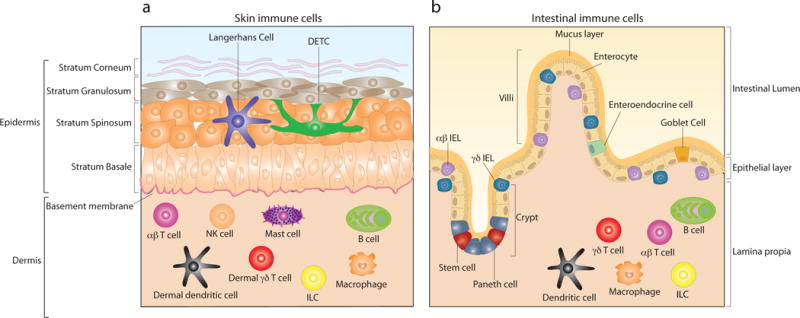Figure 1. Skin and intestinal epithelial composition with immune cell distribution.

a) Skin is composed of two major compartments, the epidermis and the dermis, which are separated by the basement membrane. The outer most layer is the epidermis, which is further subdivided into four layers; stratum corneum, strata granulosum, strata spinosum and stratum basale. The cellular composition of epidermis is dominated by keratinocytes, accounting for ~95% of all cells in the epidermal compartment. Among additional cells residing in murine epidermis are Langerhans cells and dendritic epidermal γδ T cells (DETC). Due to the presence of blood and lymphatic vessels, through which circulating lymphocytes traffic to and from skin, the cellular composition of the dermal compartment is more diverse than the epidermis. Dermal residing immune cells include dermal dendritic cells, γδ T cells, αβ T cells, innate lymphoid cells (ILC), mast cells, macrophages, B cells and NK cells. b) The epithelium of the gastrointestinal tract is composed of a single cell-layer which separates the intestinal lumen from the underlying lamina propia. The intestinal epithelial layer forms both crypts and villi. Pluripotent stem cells are located at the base of crypts and give rise to 4 distinct epithelial cell subsets; enterocytes, which represent the majority of epithelial cells, Goblet cells, enteroendocrine cells and Paneth cells. Both γδ and αβ intraepithelial lymphocytes (IEL) are interspersed throughout the epithelium and are positioned both within and directly below the epithelium. Beneath the intestinal epithelium, the lamina propia is home to a plethora of immune cells which include dendritic cells, γδ T cells, αβ T cells, ILC, macrophages and B cells.
